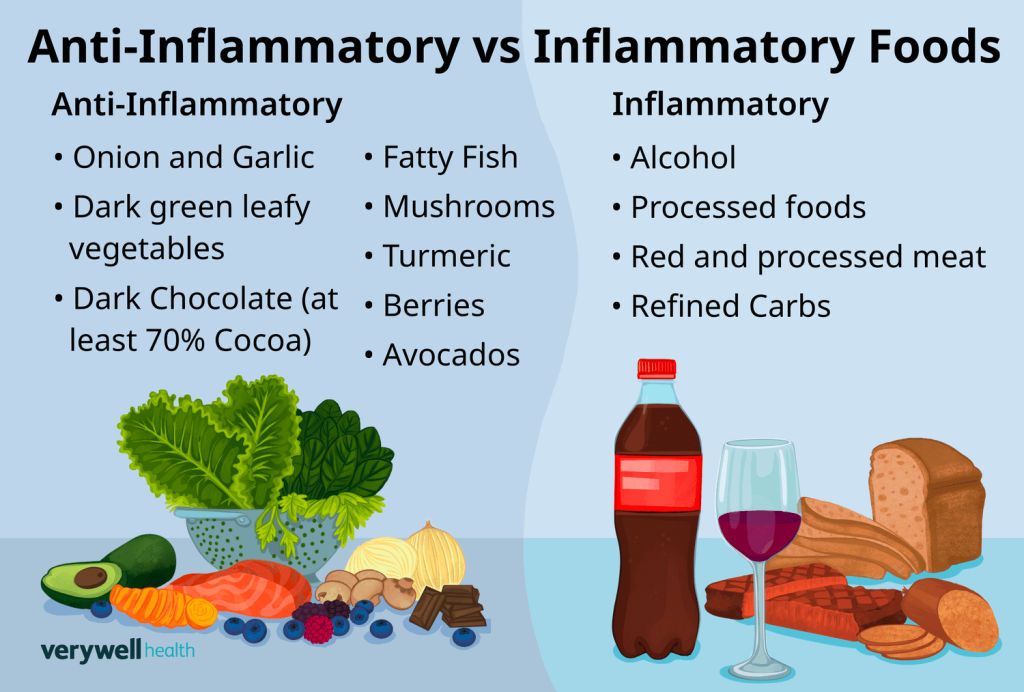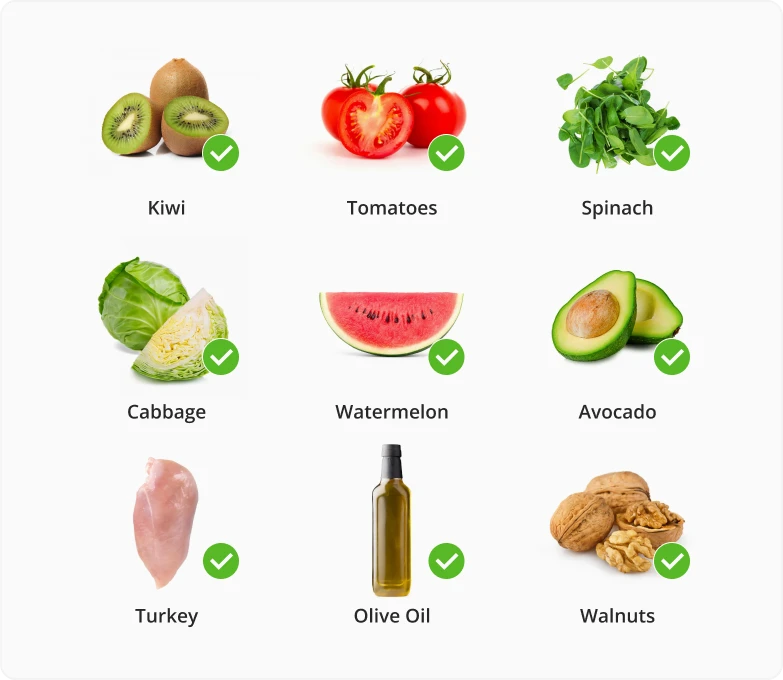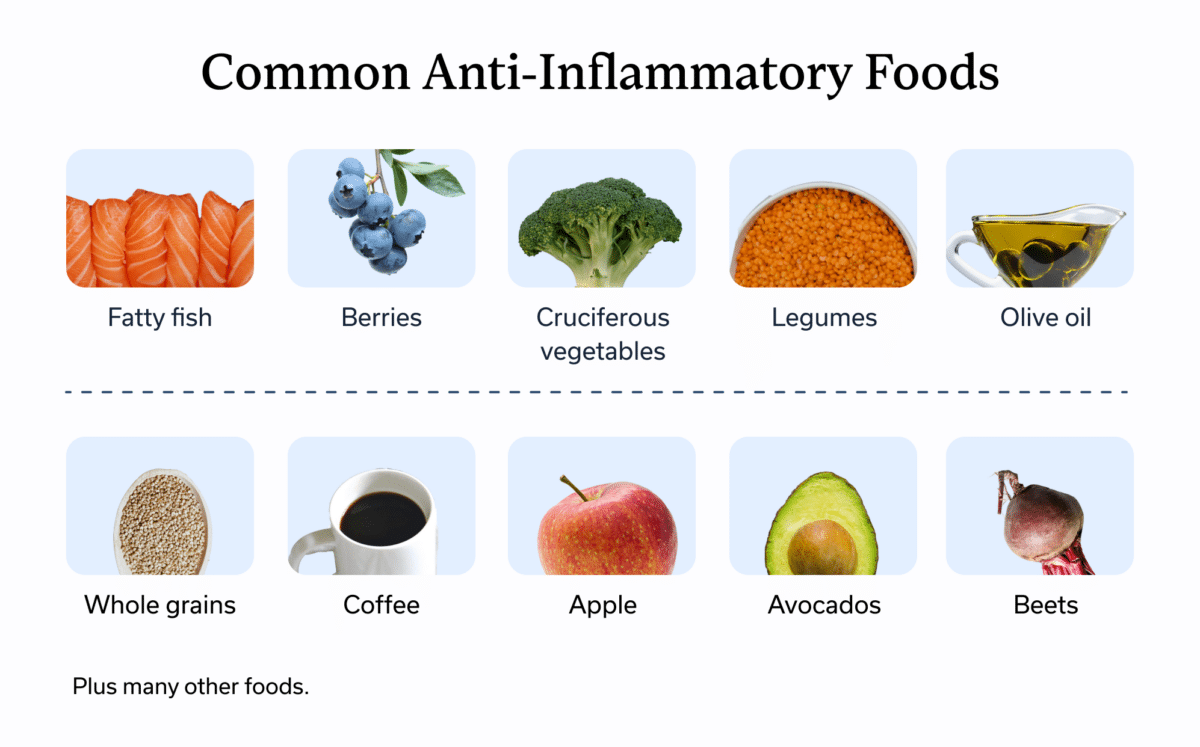Are you dealing with joint pain, fatigue, or digestive issues that just won’t go away? You’re not alone. Chronic inflammation affects millions of people, often flying under the radar while contributing to everything from arthritis to heart disease. The good news? Your grocery cart might hold the key to feeling significantly better.
While inflammation is your body’s natural defense mechanism, chronic inflammation can wreak havoc on your health and energy levels. Instead of reaching for another bottle of over-the-counter pain relievers, what if you could fight inflammation from the inside out with delicious, nutrient-packed foods?
This comprehensive guide will arm you with 50 powerful anti-inflammatory foods that can help reduce inflammation naturally, boost your energy, and get you back to feeling like yourself again.
Understanding Inflammation: The Good, The Bad, and The Painful
Before we dive into our power-packed food list, let’s quickly understand what we’re dealing with. Acute inflammation is actually your friend – it’s what helps heal a cut or fight off a cold. But chronic inflammation? That’s the troublemaker that lingers in your system, contributing to conditions like:
- Arthritis and joint pain
- Heart disease
- Diabetes
- Digestive issues
- Fatigue and brain fog
- Skin problems like eczema
The amazing thing about anti-inflammatory foods is that they don’t just target one symptom – they work throughout your entire system to help your body function at its best.

The Ultimate Anti-Inflammatory Foods List
Fatty Fish: Your Omega-3 Powerhouses
1. Salmon – Wild-caught salmon is packed with omega-3 fatty acids that actively fight inflammation.
2. Mackerel – This affordable fish delivers more omega-3s per serving than most supplements.
3. Sardines – Don’t let their size fool you – sardines are inflammation-fighting champions.
4. Tuna – Choose wild-caught when possible for the highest nutrient content.
5. Anchovies – Perfect for adding to salads or pasta for an anti-inflammatory boost.
Leafy Greens: Nature’s Medicine Cabinet
6. Spinach – Rich in antioxidants and easy to add to smoothies, salads, or omelets.
7. Kale – A nutritional powerhouse that’s surprisingly delicious when massaged with olive oil.
8. Swiss chard – Beautiful, colorful stems pack just as much nutrition as the leaves.
9. Arugula – Adds a peppery kick to salads while fighting inflammation.
10. Collard greens – Traditional soul food that’s incredibly healing for your body.
Colorful Berries: Sweet Inflammation Fighters
11. Blueberries – Packed with anthocyanins that give them their deep blue color and anti-inflammatory power.
12. Strawberries – Rich in vitamin C and compounds that reduce inflammatory markers.
13. Blackberries – High in fiber and antioxidants that support gut health.
14. Raspberries – Contain ellagic acid, a powerful anti-inflammatory compound.
15. Cherries – Tart cherries are especially effective for reducing muscle soreness and joint pain.
Nuts and Seeds: Portable Inflammation Fighters
16. Walnuts – The only nut with significant amounts of omega-3 fatty acids.
17. Almonds – Rich in vitamin E, which helps protect against oxidative stress.
18. Chia seeds – Tiny but mighty, packed with omega-3s and fiber.
19. Flaxseeds – Grind them fresh for maximum anti-inflammatory benefits.
20. Hemp seeds – Complete protein source with perfect omega fatty acid ratios.
Spices and Herbs: Flavor Meets Medicine
21. Turmeric – Contains curcumin, one of the most studied anti-inflammatory compounds.
22. Ginger – Fresh or dried, it’s incredibly effective for reducing inflammation and nausea.
23. Garlic – Contains sulfur compounds that have powerful anti-inflammatory effects.
24. Cinnamon – Helps regulate blood sugar while fighting inflammation.
25. Rosemary – Rich in antioxidants and adds amazing flavor to roasted vegetables.
Healthy Fats: The Good Guys
26. Extra virgin olive oil – Choose cold-pressed for maximum anti-inflammatory benefits.
27. Avocados – Rich in oleic acid, which reduces inflammatory markers.
28. Coconut oil – Contains lauric acid, which has anti-inflammatory properties.
Colorful Vegetables: Rainbow Medicine
29. Sweet potatoes – Rich in beta-carotene and fiber that supports gut health.
30. Broccoli – Contains sulforaphane, a powerful anti-inflammatory compound.
31. Bell peppers – All colors are rich in vitamin C and antioxidants.
32. Tomatoes – Rich in lycopene, especially when cooked.
33. Beets – Contain betalains that give them their color and anti-inflammatory power.
34. Carrots – Beta-carotene converts to vitamin A, supporting immune function.
35. Purple cabbage – Anthocyanins give it color and inflammation-fighting power.
Teas: Sip Your Way to Less Inflammation
36. Green tea – Rich in EGCG, a powerful anti-inflammatory compound.
37. White tea – Less processed than green tea, with even higher antioxidant levels.
38. Chamomile tea – Gentle and soothing, with anti-inflammatory properties.
39. Ginger tea – Perfect for digestive issues and general inflammation.
Whole Grains: Fiber-Rich Inflammation Fighters
40. Quinoa – Complete protein with anti-inflammatory properties.
41. Brown rice – Rich in fiber that supports gut health.
42. Oats – Beta-glucan fiber helps reduce inflammatory markers.
Legumes: Plant-Based Protein Powerhouses
43. Lentils – High in fiber and protein, supporting stable blood sugar.
44. Black beans – Rich in anthocyanins and fiber.
45. Chickpeas – Versatile and packed with inflammation-fighting nutrients.
Fermented Foods: Gut Health Heroes
46. Yogurt – Choose varieties with live probiotics and no added sugar.
47. Kefir – Even more probiotic-rich than yogurt.
48. Sauerkraut – Fermented cabbage that supports gut health.
Dark Chocolate: The Delicious Medicine
49. Dark chocolate (70% cacao or higher) – Rich in flavonoids that reduce inflammation.
Mushrooms: Immune System Supporters
50. Shiitake mushrooms – Contain compounds that support immune function and reduce inflammation.

How to Incorporate Anti-Inflammatory Foods Into Your Daily Life
The key to success isn’t overhauling your entire diet overnight. Instead, focus on adding more of these foods gradually:
Start Your Day Right: Add berries to your oatmeal, include spinach in your morning smoothie, or cook your eggs in olive oil.
Power Up Your Lunch: Build salads with leafy greens, add avocado to your sandwich, or include a handful of walnuts in your meal.
Dinner Made Easy: Focus on fatty fish twice a week, roast vegetables with olive oil and herbs, and experiment with turmeric in your cooking.
Smart Snacking: Keep nuts and seeds handy, reach for berries instead of processed snacks, and sip on green tea throughout the day.
Foods to Limit: The Inflammation Triggers
While adding anti-inflammatory foods is crucial, it’s equally important to reduce foods that promote inflammation:
- Processed and packaged foods
- Refined sugars and high fructose corn syrup
- Trans fats and highly processed oils
- Excessive amounts of red meat
- Refined grains like white bread and pasta
The Bottom Line: Small Changes, Big Results
Fighting inflammation doesn’t require a complete lifestyle overhaul or expensive supplements. By gradually incorporating more of these 50 anti-inflammatory foods into your meals, you’re giving your body the tools it needs to heal from the inside out.
Remember, consistency beats perfection every time. Start with adding just 2-3 of these foods to your daily routine and build from there. Your joints, energy levels, and overall health will thank you.
The path to reduced inflammation and better health is literally as close as your next meal. Which anti-inflammatory food will you try first?
Ready to take your health journey to the next level? Check out our other evidence-based guides on nutrition, fitness, and wellness designed to help you feel your absolute best.
